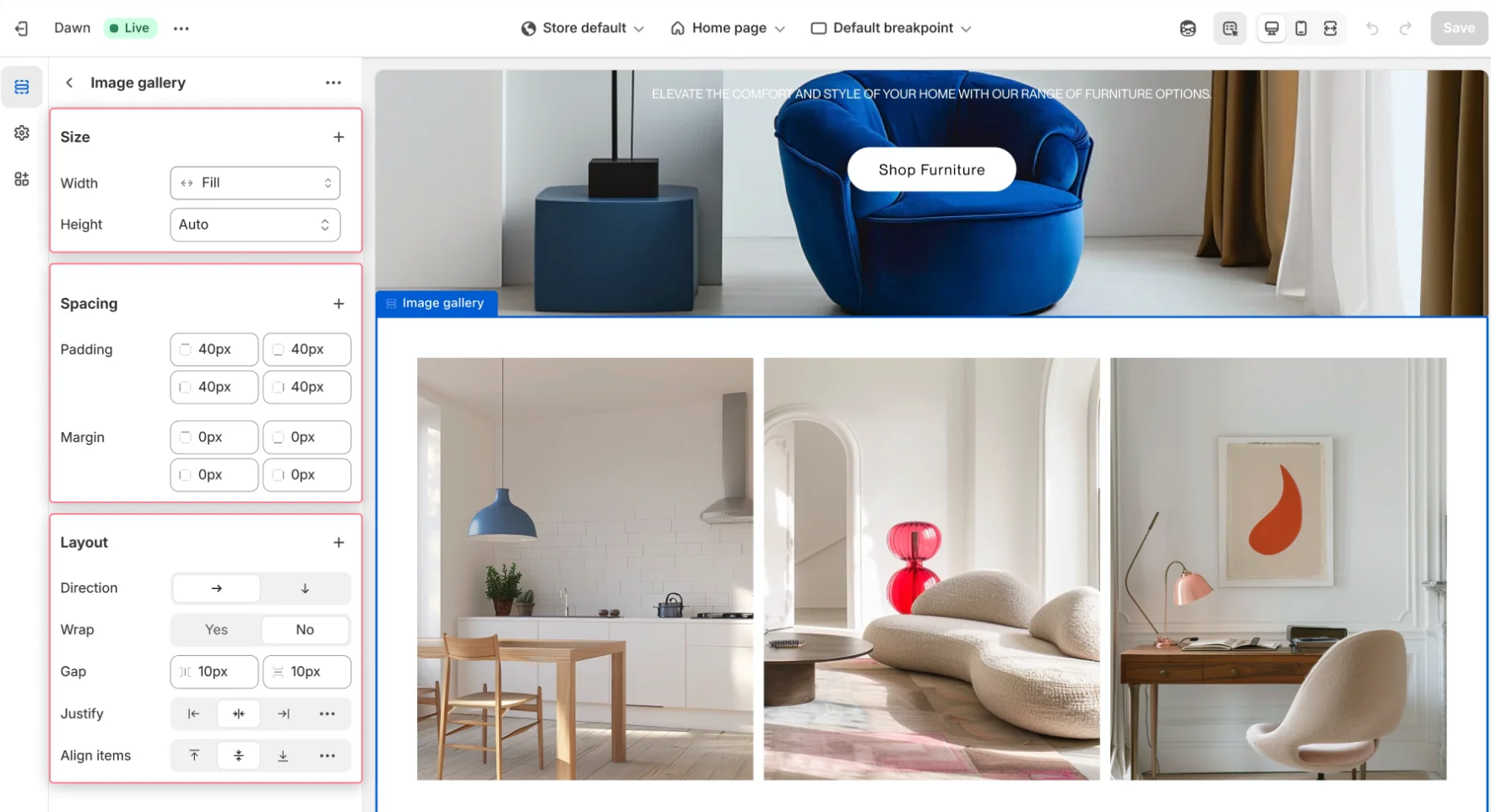
-
Shopify
+1
Klaviyo Vol 5: Solving Localised Double Opt-In at Scale
Klaviyo Vol 5: Solving Localised Double Opt-In at Scale
Shopify Editions Summer '24:


Shopify Editions Summer ’24 is here, and this time, Unified Commerce takes the spotlight!
For years, Shopify has been steadily perfecting the integration of online, in-person (POS), B2B, and D2C functionalities. With each update, we’ve seen this vision become more tangible. This summer, it all comes together with over 150 updates, and Shopify is delivering its most unified platform yet—VP Glen Coates said it best.
At Ask Phill, we discussed these updates with Tico van Beurden, our Head of Product, and Yasmin van Nieuwland, our Shopify Consultancy Lead for No Code* and Native Build* projects. They agree: Shopify is emerging as a dominant force in commerce, making it hard to choose any other platform. Dive into their insights on how these updates can transform your business.
Before we dive into the article, let’s clarify the key terms used to describe different types of Shopify projects. This will ensure there’s no confusion as we discuss the various updates and their implications for different types of merchants.
Shopify theme projects that don’t require coding, ideal for quick, cost-effective online setups for small to medium-sized businesses.
Custom Shopify themes involve some coding to tailor designs and features, offering more control and flexibility for growing businesses seeking a tailored brand experience.
Headless commerce decouples the frontend from Shopify’s backend, providing complete control and flexibility for large enterprises requiring highly personalized, dynamic shopping experiences.
Operational enhancements
Question: Can you highlight an update that significantly boosts operational efficiency for merchants?
Yasmin (Shopify Consultancy lead): “The new unified Shopify Markets is a huge leap forward for operational efficiency. It centralizes cross-border, B2B, and in-person selling into one command center. This unified dashboard cuts down on complexity, making it easier for merchants to manage their businesses. Many of our clients struggled with the previous setup, finding it difficult to make necessary modifications. The new workflow simplifies setting up new markets, and automatic restrictions help prevent compliance issues. For No Code and Native Build merchants, the improved setup process and clearer learning curve make it significantly easier to understand and implement.”
Question: How will the new reimagined Shopify Markets affect larger and enterprise merchants?
Tico (Head of Product): “The revamped Shopify Markets is a substantial upgrade. As one Shopify representative put it, you almost previously needed a PhD in Shopify Settings to navigate it! Now, the centralized dashboard offers much-needed clarity. While many big clients manage their pricing and inventory through external PIM systems, the overview provided by Markets is invaluable for team coordination. Previously, we noticed some buggy behavior in the B2B/market crossover, which prevented creating B2B templates for specific markets. It’s encouraging to see Shopify addressing these issues, aligning perfectly with their Unified Commerce vision and streamlining backend processes.”
Shopify Markets: It is a central command center for managing cross-border, B2B, and in-person selling from one place in the Shopify admin. It allows businesses to customize catalogs, themes, currencies, and domains for each market, providing tailored buyer experiences. For more details, visit the Shopify blog. This feature will become available to all Shopify customers over the next few months.
"The new Shopify Markets reinforces Shopify’s unified strategy to offer one solution for retail across different markets and B2B from a single backend."

Customization capabilities
Question: What are some standout new or improved customization options this time around, and how do they benefit merchants?
Tico (Head of Product): “The new style settings for themes let merchants, especially the No Code ones, easily customize their store’s layout, size, and spacing without needing a developer. This is great for small businesses or those with limited budgets, offering flexibility and more control over their store design. It’s a significant step closer to something like Webflow, bringing powerful customization capabilities within reach. However, merchants should be really cautious about design hierarchy to avoid disrupting the store’s cohesiveness
Also, the Hydrogen Visual Editor will close the gap between Native Build and Custom Build, simplifying headless commerce. It makes headless more attractive and accessible to a wider range of merchants. While you still need developers for initial setup, the visual editor makes it easier to change and add content. We’ve been expecting this update, and it’s great to see that Shopify is committed to supporting headless commerce. They’re showing that headless still has its place and that they haven’t forgotten about it.”


B2B features
Question: How do the new B2B features enhance the Shopify experience for merchants?
Yasmin (Shopify Consultancy Lead): “The recent B2B updates cater to a wide range of merchants. Previously, customizing views for each market was not possible, which limited flexibility. Now, merchants can tailor the shopping experience for different B2B markets, making Shopify’s B2B offerings more robust and accessible for everyone.“
Tico (Head of Product): “For larger merchants, these updates are even more critical. The ability to create up to 10,000 ship-to locations per company profile is essential for handling extensive distribution networks. This also includes support for up to 10,000 customers, allowing businesses to manage all their B2B customers in one place. Manual payments and enhanced catalog management simplify complex transactions and inventory handling. Plus, the new Trade theme is particularly useful for setting up B2B stores designed for repeat and bulk purchasing. While Shopify’s B2B solution might not yet offer all default functionalities, it’s clear they’re investing heavily. It will only become more solid in the future. Some clients had initial reservations about migrating, but we believe it’s worth it as more features are coming.”
Marketing innovations
Question: Are there any new updates that help merchants optimize their marketing strategies?
Yasmin (Shopify Consultancy lead): “The new analytics in Shopify are a significant step forward, especially for merchants with smaller teams who are still learning to leverage their data. The revamped analytics dashboard is faster, more flexible, and incredibly intuitive, making it easier to customize reports and get real-time insights. This helps merchants make better marketing decisions and optimize their campaigns effectively. It’s particularly beneficial for smaller businesses that often feel lost in their customer data, providing them with the tools to learn and grow.”
New Analytics: Shopify’s new analytics platform is faster and more intuitive, offering real-time insights and customizable dashboards. For more details, visit this blog article. This feature will be available to all Shopify customers over the next few months.
Conversion rate improvements
Question: What are some recent updates that can help merchants improve their conversion rates?
Yasmin (Shopify Consultancy Lead): “The split checkout feature is a big win for merchants. It allows customers to see if their order will be split into multiple shipments and choose their preferred shipping options for each. This transparency reduces support inquiries and gives customers more control over their orders, enhancing their overall experience.
Including duties and taxes in product prices is another great update. This transparency helps prevent sticker shock at checkout, increasing conversions for international buyers“
Tico (Head of Product): “Split shipping is particularly beneficial for businesses dealing with pre-orders or items from different locations. For example, a furniture store might sell large items like sofas that take longer to ship or are available for pre-order. At the same time, they might sell smaller items like candles that can ship immediately. Split checkout allows customers to choose faster shipping for the candles and standard shipping for the sofa, improving their overall shopping experience and satisfaction.”
- Split shipping in checkout: This feature allows customers to see when an order will be split into multiple shipments and choose the lowest price, fastest delivery, or custom shipping options for each part of their order. More info about it here.
- Including Duties in product prices: It will be possible to display duties and taxes within the product price for international buyers, ensuring transparency and preventing unexpected costs at checkout.This feature will be available to all Shopify customers over the next few months.
The split checkout feature is a big win for merchants. This transparency reduces support inquiries and gives customers more control over their orders.

POS updates
Question: What updates are especially beneficial for merchants using point of sale systems? How do these updates help small to mid-sized merchants compete more effectively?
Yasmin (Shopify Consultancy Lead): “ The latest POS updates significantly enhance inventory management, customer engagement, and operational efficiency, particularly benefiting small to mid-sized merchants. Key updates include:
Custom product catalogs for POS locations allow merchants to tailor their inventory and pricing strategies for different stores, ensuring they can meet local demands and optimize their offerings. This flexibility is particularly beneficial for small to mid-sized businesses that need to be agile in their operations.
Shop Pay integration is another standout feature, identifying Shop Pay users and facilitating quick sign-up for email marketing. This not only helps merchants grow their email marketing lists but also enhances customer engagement, making it easier to maintain relationships with customers who shop in-store.
Then, the introduction of automated return rules simplifies the return process for POS staff by automatically displaying return eligibility and reasons for ineligibility.
Additionally, the ship-to-store option increases convenience for customers who prefer to pick up their orders in-store, improving overall customer satisfaction. On the other hand, the ship-from-store feature allows merchants to fulfill orders from any POS location, optimizing logistics and ensuring efficient inventory management.”
- Custom Product Catalogs: This feature allows merchants to unlock custom pricing and publishing for each retail market, offering regionalized checkout flows and translated product catalogs. It will be available soon. More information here.
- Shop Pay Integration: Retailers can offer one-tap digital receipts that auto-suggest the customer’s email from Shop Pay, and give them the option to subscribe to marketing.
- Return Rules: This update streamlines in-store returns by providing rules that staff can quickly reference to determine if a product can be returned and clearly communicate the reason to customers.
- Ship to Store: Allows inventory to be shipped to a POS location for in-store pickup, enhancing customer convenience. More information about it here.
- Ship from Store: Enables merchants to fulfill orders from any POS location, improving inventory management and logistics efficiency. More information about it here.
Additional thoughts on other updates
Question: Are there any other updates you think merchants should know about?
Yasmin (Shopify Consultancy Lead): “Shopify Plus merchants can now combine multiple products into one product listing on the storefront, which will allow them to separate products by color or other options. This lets the customer see the product images and information for the particular color or variant they're interested in. This is a great solution for our no-code clients, as they can have more control over their product merchandising without the need for additional apps or development.
Additionally, Shopify Magic is a fantastic tool for businesses with limited support resources. It uses AI to assist with customer inquiries by providing relevant order and customer information, speeding up response times and making customer support more efficient. It simplifies workflows, making the support process quicker and easier for staff.”
Tico (Head of Product): “Checkout Blocks, which Shopify acquired and now offers for free to Shopify Plus users, is an app that many of our merchants rely on. At Ask Phill, we are big fans of the app and have implemented it in numerous projects. We also have a close collaboration with Gil Greenberg, the founder of Checkout Blocks, who has released features specifically requested by our merchants. For example, we’ve used it for PinkGellac to show USPs and alternative payment methods below express checkout, for Walra to display USPs, and for Vanilia to provide product recommendations in the checkout. It’s exciting to see Shopify investing in their ecosystem, ultimately benefiting the entire platform and its merchants.”
- Combined Listings: Shopify Plus merchants can combine multiple products into one product listing, allowing separation by color or other options, improving product merchandising and customer experience. Get the App here.
- Shopify Magic: AI-generated replies in Shopify Inbox help merchants quickly respond to customer inquiries. This feature uses data specific to the store to craft accurate responses, improving customer satisfaction and boosting conversion rates by up to 69%, according to Shopify studies. This feature will be available soon.
- Checkout Blocks: Now free for Shopify Plus users, Checkout Blocks allow merchants to customize checkout pages with features like custom banners and loyalty rewards. Get App here.


Shopify Editions Summer ’24 takes another stride toward solidifying Unified Commerce. From seamless B2B features to smarter analytics and powerful AI tools, they’re making every aspect of running a business more efficient and intuitive.
As always, Shopify is proving they’re not just keeping up with the future of commerce—they’re defining it. We’re already looking forward to the Winter ’24 Editions, which promise exciting new features like customer account UI extensions.
One thing’s certain: The future of commerce will happen on Shopify.
Want to harness the full power of these updates? Get in touch with us at Ask Phill for expert guidance.

Klaviyo Vol 5: Solving Localised Double Opt-In at Scale
Klaviyo Vol 5: Solving Localised Double Opt-In at Scale

The gap is widening
Shopify Winter '26 Edition: 10 Reasons Not Being on Shopify Is Now a Competitive Disadvantage

The early-access strategy that increased conversions to 33%
Klaviyo Vol 4: Travelteq’s WhatsApp Advantage
Stay ahead
Subscribe to our newsletter for a roundup of the latest in ecommerce, straight to your inbox.